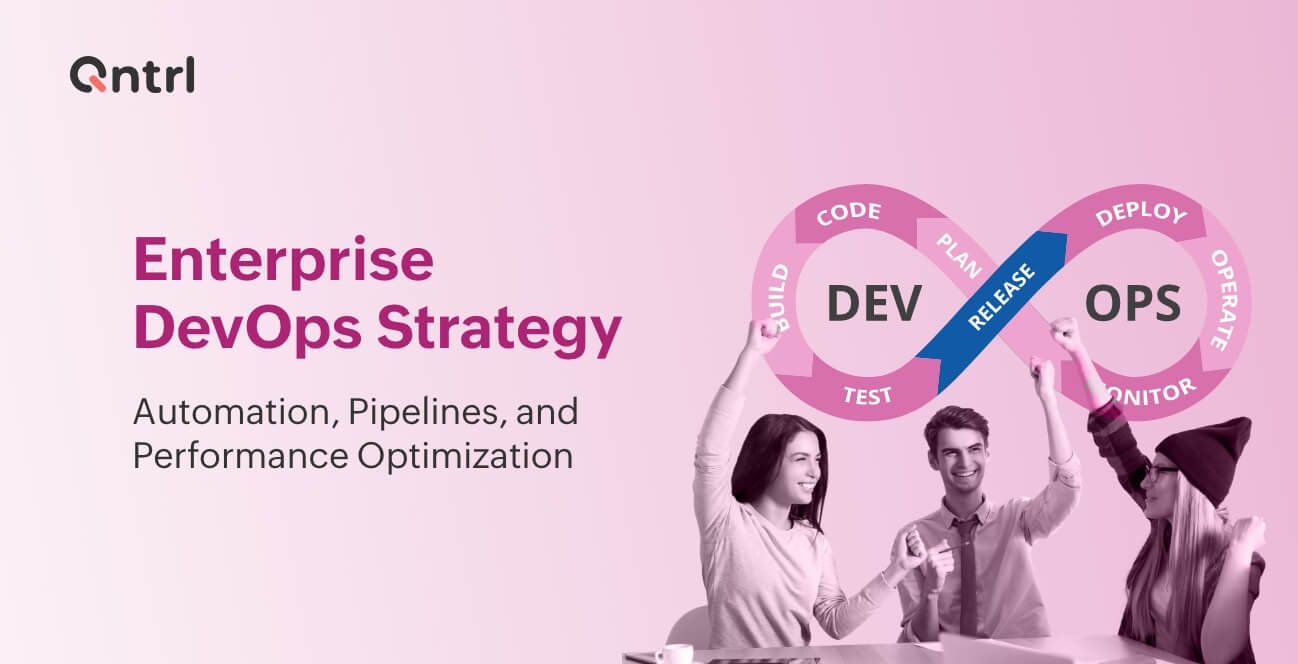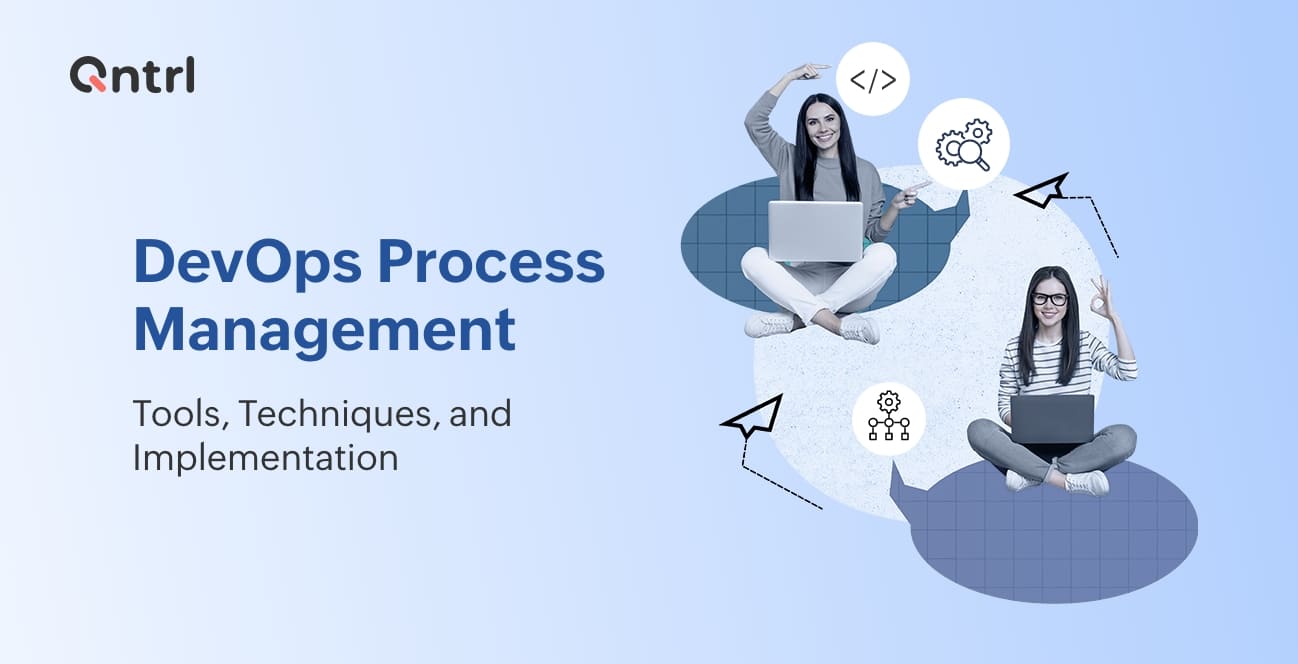Orchestrating IT workflows at enterprise scale with Qntrl

How much productive time does your IT team lose to routine tasks like server restarts, user account creation, and manual file transfers? In most enterprises, these repetitive actions accumulate into hundreds of wasted hours each month, obscuring modern IT operations' true complexity and cost.
For most enterprises, as organizations grow, work scatters across CRMs, ERPs, ticketing platforms, and databases, usually with manual steps in between.
The result is fragmented processes, delays, and errors. Nearly all companies relying on manual workflows face productivity losses, while a huge chunk experience inconsistent data due to disconnected systems. Beyond slowing operations, these gaps also create compliance risks and reduce visibility into critical workflows.
How Qntrl enables true IT orchestration
Qntrl is a unified workflow orchestration and integration platform. It is designed to simplify enterprise operations. Its orchestration engine focuses on system-to-system and software-to-software automation, taking over those behind-the-scenes IT workflows that rarely need human input but still consume valuable time when handled manually.
Here are the core ways Qntrl empowers IT teams:
Model complex flows in builder or code
Workflows can be designed visually (drag-and-drop states and flow controls) or defined in code with a concise JSON structure. That gives architects low-code speed and pro-code precision in the same place, including versioning and sandboxed changes before go-live.
Event-driven and schedule-driven automation
Kick off flows when a monitor fires, a webbook lands, a file arrives, or on a cron-like schedule. Typical incident patterns: restart a flaky service, roll back the last deploy, open an ITSM ticket, notify on-call, and post a timeline update in chat, all in seconds, not hours.
Built-in resilience: retries, fallbacks, and validation
Real environments time out, credentials expire, and networks hiccup. Qntrl let you define retry policies (e.g., exponential backoff), alternate branches when a step fails, and input validation so bad data doesn’t flow downstream. Instead of snowball failures at 2 a.m., you get self-healing behaviour and targeted alerts.
Approvals, RBAC, and audit trails for compliance
Automation without governance is a risk. Qntrl enforces role-based permissions, gated approvals, and full execution logs for every run: Who did what, when, and why. This makes it easier to demonstrate process control and pass audits while keeping changes transparent across teams.
Secure hybrid integration
Most enterprises run hybrid. Qntrl is a lightweight agent you deploy inside your network to reach on-prem systems securely (AD, Oracle, Unix hosts, SCP, JDBC, REST, SSH) without exposing them to the internet. Credentials can be stored locally on the Bridge, connections are encrypted, and SSL is configurable, giving you cloud orchestration with on-prem privacy.
Proven privileged task orchestration with PAM360
ManageEngine’s PAM360 ships a privileged task orchestration module powered by Qntrl, to automate high-risk tasks across endpoints (e.g., service resets after password rotations, ephemeral account creation, safe cleanup).
Connectors and extensions when you need more reach
Out of the box, you can orchestrate via REST, webhooks, and native connectors, and you can extend further with Power Actions by Zoho Flow, which provides 1000+ ready-to-connect apps for quick integrations. For bespoke needs, build templates and extensions in and publish them internally or to the marketplace.
Enterprise-grade security and certifications
Qntrl adheres to SOC 2 Type II and major ISO standards as part of Zoho's compliance program.
Real-time visibility and continuous improvement
Dashboards show status, SLA adherence, failure hotspots, and throughput. With that clarity, you tune which steps to parallelize, where to cache, and where to add or remove approvals. Over time, your flows get faster and safer, not just more automated.
Concrete use cases that move the needle
Zero-touch onboarding and offboarding
Goal: Provision the proper access in minutes, with the same rigor every time.
Flow: HRIS event → create AD/Azure AD account → assign groups and entitlements → create mailbox and DL memberships → push MDM profiles → request app licenses → create Jira/ServiceNow assignment → notify manager in chat → log the run with approvals and artifacts.
Why it works: One request, one orchestrated chain, zero manual spreadsheets.
Incident auto-remediation
Goal: Cut mean time to resolution.
Flow: Monitoring alert → run health checks → restart specific services → if second failure, roll back deploy → open incident in ITSM with timeline → page on-call and post in ops channel → attach logs → confirm recovery and close.
Why it works: The first 10 minutes happen automatically, consistently.
Privileged task automation
Goal: Reduce hands-on work with admin credentials.
Flow (PAM360 + Qntrl): Rotate credentials → trigger Qntrl → update dependent services → verify application health → log every step → notify owners.
Why it works: Auditable, least-privilege operations without brittle scripts.
Data operations across hybrid estates
Goal: Move and transform data safely between on-prem and cloud.
Flow: Nightly schedule → run stored procedure on Oracle via Qntrl → validate row counts and checksum → upload to S3 or lakehouse → trigger downstream analytics job → send summary and attach audit.
Why it works: Secure local execution, encrypted transit, central audit.
A simple ROI lens to justify the move
Orchestration pays for itself when you combine saved labor, reduced incidents, and faster delivery:
- Labor: If a 10-minute manual task runs 600 times a month, that’s 100 hours saved monthly at scale.
- Incidents: Shaving 15 minutes off MTTR across dozens of alerts compounds into real uptime.
- Cycle time: Fewer queues and emails mean faster employee onboarding, vendor access, and releases — visible to business owners.
Implementation checklist (90 days)
- Select three high-volume, low-variance candidates (e.g., offboarding, nightly data sync, service restarts).
- Map the current flow with exact systems, failure modes, and approvals.
- Build in builder view first, add code where needed, and enable retries + dead-letter handling.
- Deploy for on-prem connectivity and store credentials locally.
- Add RBAC and approvals for risky steps; attach evidence to tickets.
- Instrument dashboards (success/failure, duration, MTTR). Iterate weekly with owners.
- Expand via connectors (Zoho Flow, native APIs) and templatize.
Why this matters to IT leaders right now
- Unified control with less sprawl: Retire ad-hoc scripts and scattered schedulers; one orchestrator, one audit trail.
- Higher productivity and fewer errors: Standardized runs beat tribal knowledge and memory.
- Stronger security and compliance: RBAC, approvals, and immutable logs reduce audit fatigue.
- Future-ready: The platform is built to orchestrate AI/ML steps and external services via API; as your stack evolves, your flows do too.
If your operations feel like a relay race with dropped batons, orchestration is how you fix the hand-offs. Qntrl brings together modelling, execution, governance, hybrid connectivity, and observability so your IT team can move from babysitting processes to driving outcomes. The first visible win is the next fire you don’t have to fight.
Unify, orchestrate, and succeed
Enterprises can no longer afford fragmented, manual IT operations. Qntrl offers a unified orchestration platform that combines automation, integration, and governance. By streamlining workflows, enforcing compliance, and delivering real-time visibility, Qntrl enables IT leaders to achieve both control and efficiency.
The result is agility, resilience, and peace of mind. Instead of firefighting and chasing errors, your IT teams can focus on innovation, confident that Qntrl is orchestrating critical operations in the background.
If you’re ready to transform your IT operations, Qntrl provides the tools to orchestrate workflows at enterprise scale. Visit the Qntrl website to learn more or reach out to the team for a tailored demo, and take the first step toward modern, orchestrated IT excellence.
Enjoying your reading?
Enjoy organization and visibility too!
Qntrl can help you organise, control and improve production and projects in your team.







